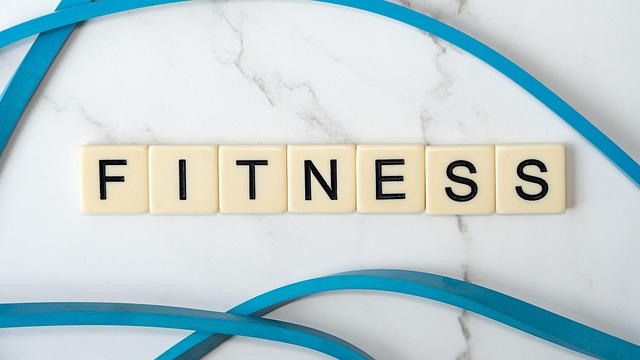In today’s fast-paced world, where stress and tension often take center stage, finding a way to restore balance to both body and mind has become more important than ever. Yoga, an ancient practice that originated in India thousands of years ago, offers a time-tested solution. It is not just a form of exercise; it is a holistic approach to improving flexibility, reducing stress, and cultivating inner peace. Whether you are new to yoga or have been practicing for years, its benefits are profound and accessible to everyone.
The Connection Between Flexibility and Stress
At first glance, flexibility and stress relief may seem unrelated. However, they are deeply interconnected. Physical tension caused by stress often manifests as tightness in the muscles, particularly in the neck, shoulders, back, and hips. Over time, this tension can lead to discomfort, pain, and even chronic conditions. By improving flexibility through yoga, you not only enhance your physical range of motion but also release stored tension, creating space for relaxation and mental clarity.
Yoga postures, or asanas , are designed to stretch and strengthen the body while encouraging mindfulness. The deliberate movements and focus on breath help calm the nervous system, which reduces the body’s stress response. This dual action—physical release and mental relaxation—makes yoga uniquely effective for addressing both flexibility and stress.
Key Yoga Poses for Flexibility and Stress Relief
Here are some foundational yoga poses that target flexibility and promote stress relief. These poses are suitable for beginners and can be modified to suit individual needs.
1. Child’s Pose (Balasana)
- Benefits : Stretches the lower back, hips, and thighs; calms the mind.
- How to Practice : Kneel on the floor, sit back on your heels, and extend your arms forward while lowering your chest toward the ground. Breathe deeply and feel the gentle stretch along your spine.
2. Cat-Cow Pose (Marjaryasana-Bitilasana)
- Benefits : Increases spinal flexibility; relieves tension in the back and neck.
- How to Practice : Begin on all fours with your hands under your shoulders and knees under your hips. Inhale as you arch your back (Cow Pose), lifting your head and tailbone. Exhale as you round your spine (Cat Pose), tucking your chin and pelvis.
3. Forward Fold (Uttanasana)
- Benefits : Stretches the hamstrings and calves; soothes the nervous system.
- How to Practice : Stand with feet hip-width apart, hinge at the hips, and fold forward, letting your head hang heavy. Bend your knees slightly if needed to avoid strain.
4. Seated Forward Bend (Paschimottanasana)
- Benefits : Lengthens the spine and hamstrings; encourages introspection.
- How to Practice : Sit with your legs extended in front of you, inhale to lengthen your spine, and exhale as you reach toward your toes. Focus on the stretch rather than achieving full extension.
5. Legs-Up-The-Wall Pose (Viparita Karani)
- Benefits : Relieves tension in the legs and lower back; promotes relaxation.
- How to Practice : Lie on your back near a wall, extend your legs up the wall, and let your arms rest by your sides. This restorative pose is excellent for unwinding after a long day.
Breathwork: The Heart of Yoga
While the physical postures play a significant role in yoga, the practice would be incomplete without conscious breathing, or pranayama . Breathwork is the bridge between the body and mind, helping to regulate emotions and reduce stress. Deep, controlled breathing activates the parasympathetic nervous system, which induces a state of calm and relaxation.
One simple yet powerful technique is Nadi Shodhana (Alternate Nostril Breathing). To practice:
- Sit comfortably with your spine straight.
- Use your thumb to close your right nostril and inhale through the left.
- Close the left nostril with your ring finger, release the right, and exhale.
- Inhale through the right nostril, close it, and exhale through the left. Repeat this cycle for several minutes, focusing on the rhythm of your breath.
This technique balances energy, clears the mind, and prepares you for deeper relaxation.
The Science Behind Yoga’s Benefits
Modern science supports what yogis have known for centuries: yoga works. Research shows that regular yoga practice can:
- Reduce levels of cortisol, the stress hormone.
- Improve flexibility and joint mobility.
- Enhance mood by increasing serotonin production.
- Lower blood pressure and improve cardiovascular health.
- Boost immune function and overall resilience.
By combining movement, breath, and mindfulness, yoga creates a positive feedback loop. As your body becomes more flexible, your mind grows calmer, and vice versa. This synergy fosters a sense of well-being that extends beyond the mat into everyday life.
Tips for Starting Your Yoga Journey
If you’re new to yoga, here are a few tips to help you get started:
- Start Small : Begin with short sessions (10–15 minutes) and gradually increase the duration as you become more comfortable.
- Listen to Your Body : Avoid pushing yourself too hard. Yoga is about progress, not perfection.
- Create a Routine : Consistency is key. Practicing even a few times a week can yield noticeable results.
- Find a Comfortable Space : Choose a quiet, clutter-free area where you can focus without distractions.
- Use Props : Blocks, straps, and blankets can provide support and make poses more accessible.
- Seek Guidance : Consider attending a class or following online tutorials to learn proper alignment and techniques.
